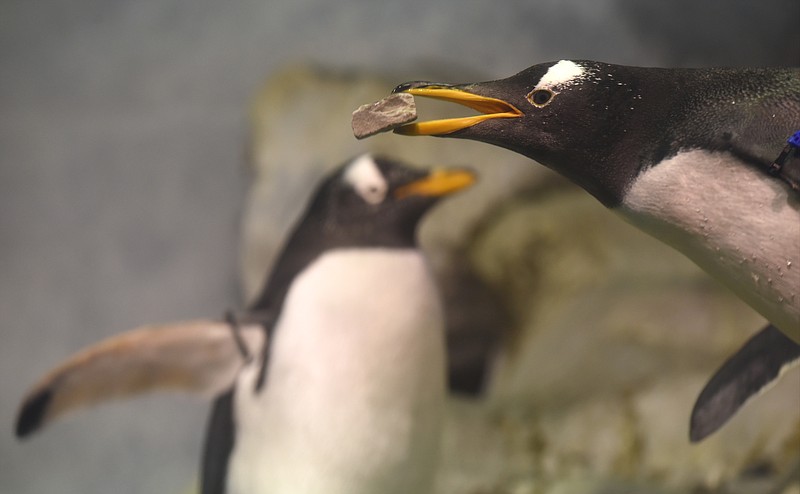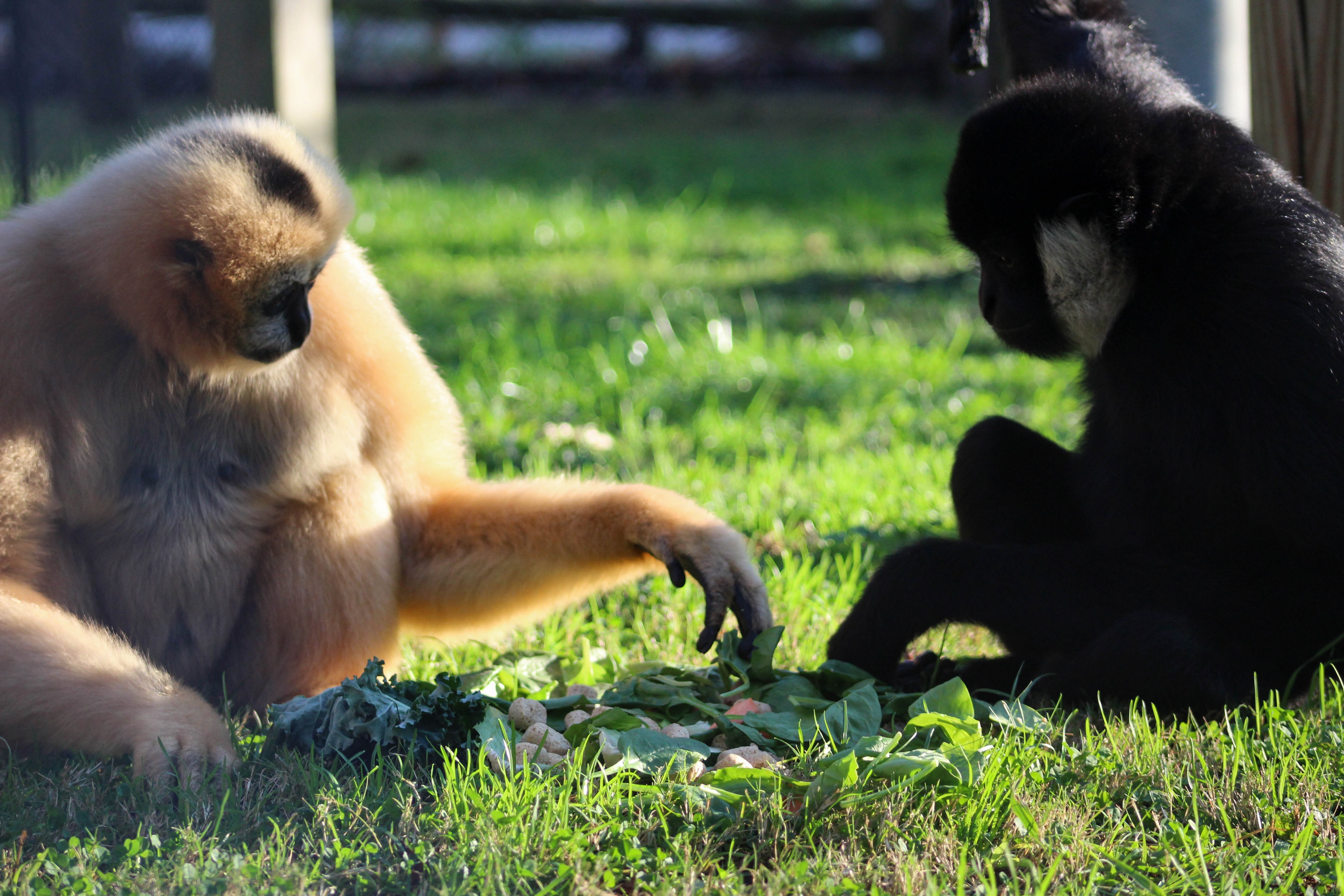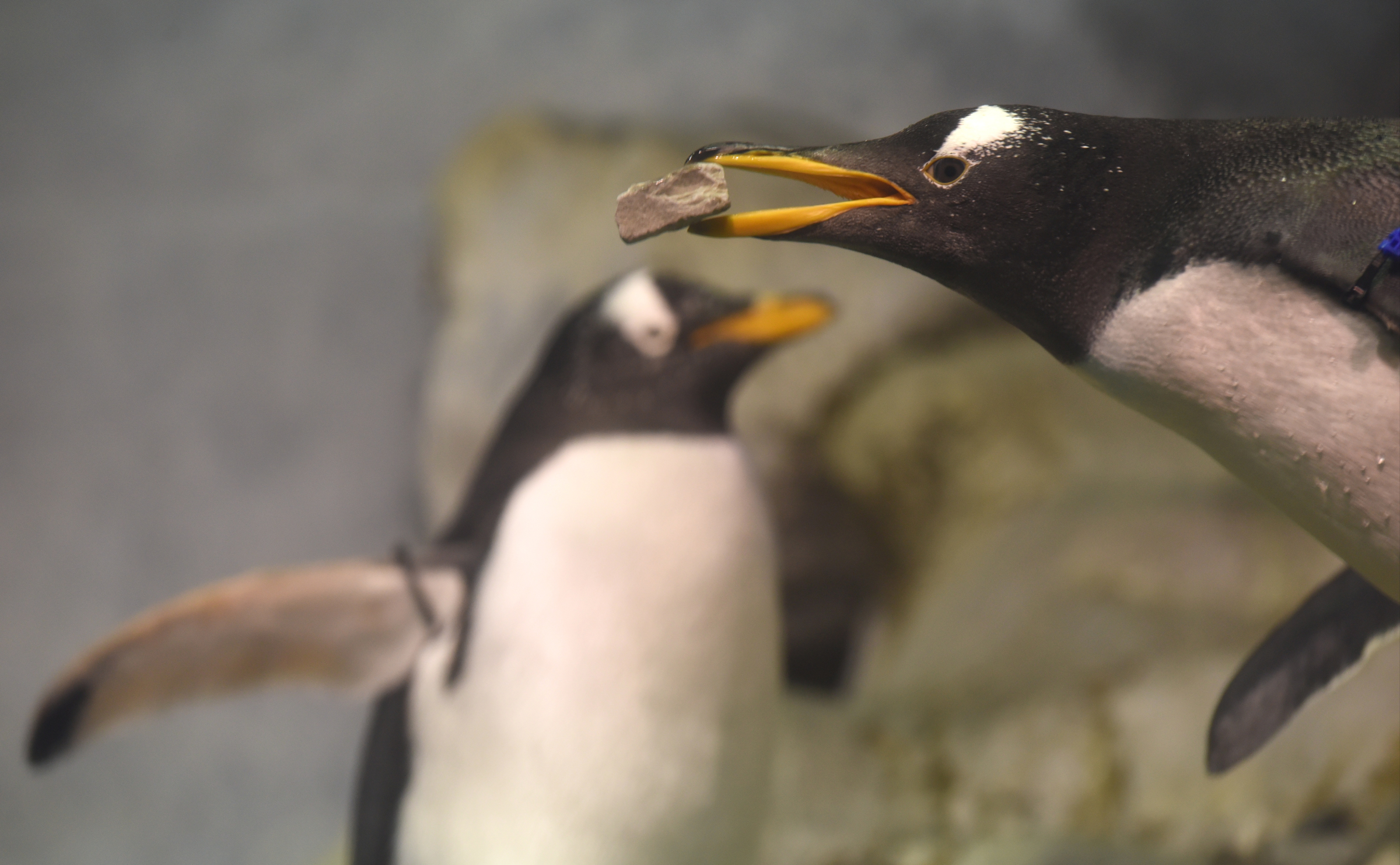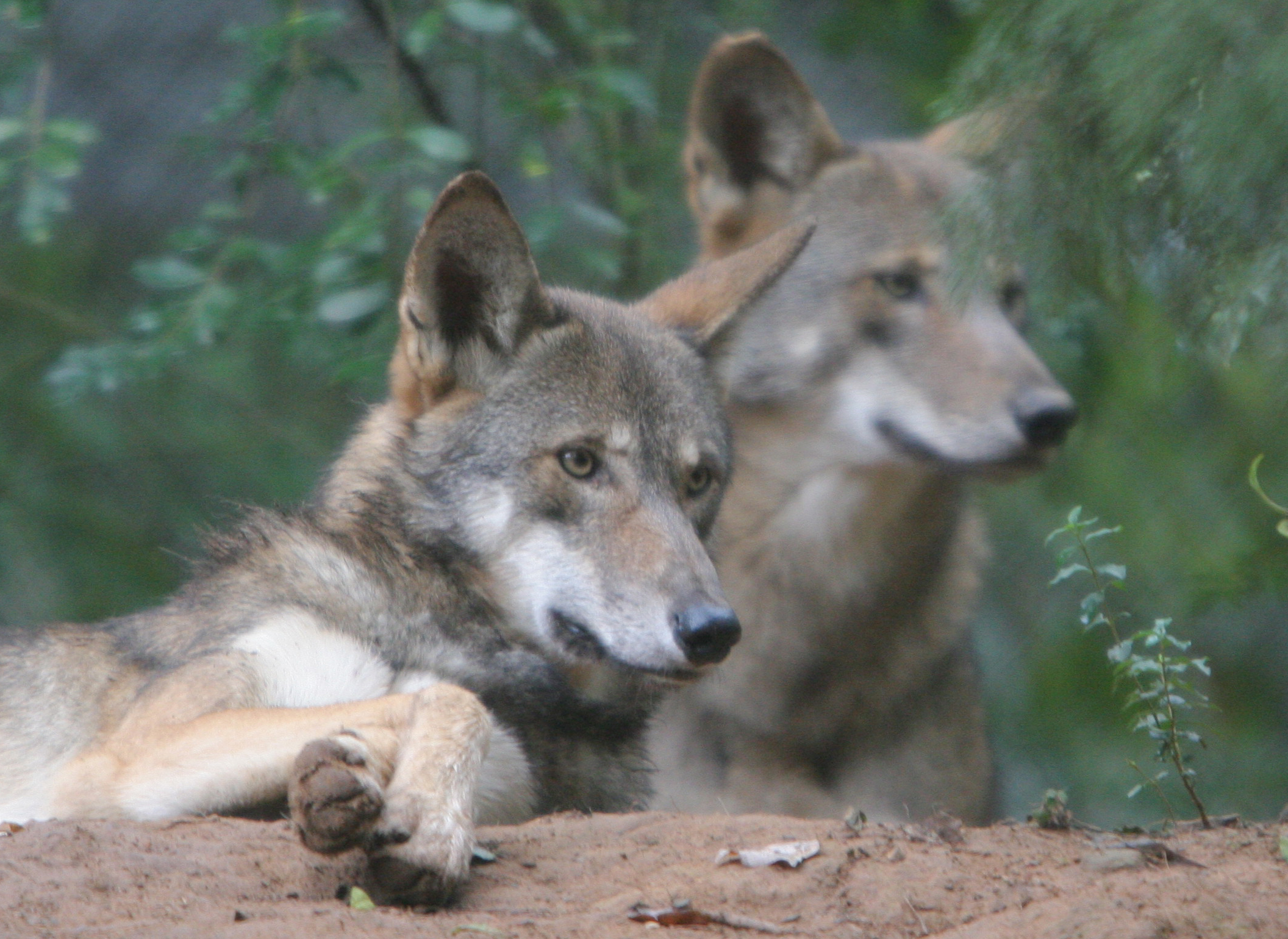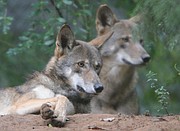Mason and Julius recently celebrated their 10th anniversary - a day like any other as far they were concerned. They woke up, foraged for breakfast together and then began to sing, each with a unique series of melodic barks and screams.
White-cheeked gibbons, like Mason and Julius, mate for life, and singing together is one way a pair establishes their bond, while also defending their territory. As residents of Chattanooga Zoo, the two have less to worry about than they might in the wild, which gives them more time to focus on each other.
They spend much of their day together, grooming or sharing snacks. When startled, they seek comfort in each other's arms.
Of course, biologists warn against anthropomorphism, which, they say, only hinders our true understanding of a species. Still, the bonds experienced between some animals are real. And it can be hard to not identify with them. From their attempts to flirt to their lovers' quarrels, some aspects of a long-term relationship just seem universal.
Let's meet a few of Chattanooga's wildest couples, whose commitments to each other are as meaningful as they are instinctual.
Bananas for you
Mason is the extrovert, spending her days visiting with zoo guests, excitedly bouncing up and down on the balls of her feet. Her long-time partner, Julius, meanwhile, is more reserved and enjoys relaxing alone on his rope hammock.
"Mason is definitely the boss of their relationship," says Chloe Smallwood, Chattanooga Zoo director of marketing.
And that's typical of white-cheeked gibbons, which live in a matriarchal society. Native to Laos, Vietnam and Southern China, the arboreal species of ape is critically endangered - possibly already locally extinct in China - making Mason and Julius' bond even more precious.
Ages: Mason (female), 16; Julius (male), 18
Years together: 10
How they met: Online. Mason and Julius were paired through the Association of Zoos and Aquariums' Species Survival Plan, which matches certain animals depending on their genetics and temperament.
Any children? No. Unfortunately, Julius is unable to have children - but to him that's probably just as well. Among white-cheek family units, the mother ranks at the top of the social hierarchy, followed by her offspring - putting the father at the very bottom.
Reason for their last argument: Apple slices. While the two usually share well, Mason sometimes has a habit of snatching her favorite fruit away from Julius.
How they keep their love alive: Quality time. Mason and Julius re-establish their bond daily by grooming each other, and, of course, singing together.
In fine feather
Penguins, like the Gentoos at Tennessee Aquarium, are serial monogamists. They tend to stay with the same mate for more than one season, but life off the coast of Antarctica can be harsh. If a female Gentoo loses her mate, she'll find another - even if that means breaking up a happy couple.
When Pebbles lost her mate in 2018, she began to pursue Nipper, the best nest builder at the aquarium. And she wasn't afraid to fight for him, instigating wing slap battles with his mate at the time, Flower. By dogged determination, Pebbles won, and the two have been a pair ever since. Flower, meanwhile, also found a new mate, Blue, with whom she hatched a chick in 2021.
Ages: Nipper (male), 16; Pebbles (female), 26
Years together: 4
How they met: Through friends. Nipper and Pebbles were acquaintances for years before Pebbles found herself single and in search of a new mate.
Any children? Yes. One, Lizzy, hatched in 2020.
Reason for their last argument: Pebbles' messiness. Nipper takes his nest-building seriously. He's adept at choosing and defending the best, flattest spots and stacking the rocks. Pebbles, however, has a habit of knocking it over to get more comfortable when she broods. Gentoo pairs take turns incubating the egg. But Nipper tends to spend more time on the nest than Pebbles - perhaps an effort to preserve his work. Pebbles prefers to be swimming anyway.
How they keep their love alive: Physical touch. Gentoos, like many bird species, keep their connections strong through mutual preening. Nipper and Pebbles take turns straightening and cleaning each other's feathers, paying special attention to the other's hard-to-reach places such as the neck or the back of the head.
Puppy love
Wolf researchers recently debunked the myth of the "alpha male."
Rather, wolf family units are now known to be co-dominated by an "alpha pair" or "breeding pair," says Tish Gailmard, Reflection Riding Arboretum and Nature Center director of wildlife.
Wolves mate for life and are fiercely family-oriented. And when it comes to choosing a partner, opposites attract - or, at least they did with Ruby and Apollo, the resident breeding pair of the nature center's eight American red wolves.
Apollo is sweet and laid back, while Ruby is about as wild as a captive-raised wolf can be, Gailmard says. But the two make it work, which is good news - as the survival of their species depends on it.
Ages: Ruby, 6; Apollo, 7
Years together: 3
How they met: On a blind date. Ruby was born at the nature center, but Apollo was brought there in 2019 as a potential suitor. They spent the first week getting to know each other through a chain-link fence. When the two were finally put into the same enclosure, they shared an instant connection.
Any children: Yes, two litters for a total of three pups. Ruby and Apollo are currently trying for a third litter. If successful, the hope is to "adopt out" one or two of their pups to a wild wolf den. Native to the Eastern U.S., red wolves are the most endangered canid in the world, with less than 30 individuals left in the wild. At the nature center, Ruby and Apollo are part of the Red Wolves Species Survival Plan, helping educate the public and ensure their family's legacy.
Reason for their last argument: A deer carcass. Typically, Ruby feeds first, but when Apollo recently found the meat before her - he helped himself. Their spat wasn't too serious, though, and only involved a bit of grumbling and growling.
How they keep their love alive: Helping each other out around the den. While female wolves do most of the pup rearing, whenever Ruby needs a break, Apollo happily steps in to watch over the litter. They also make time to have fun together, chasing each other around their enclosure. Play is an important part of the bonding process for wolves.
